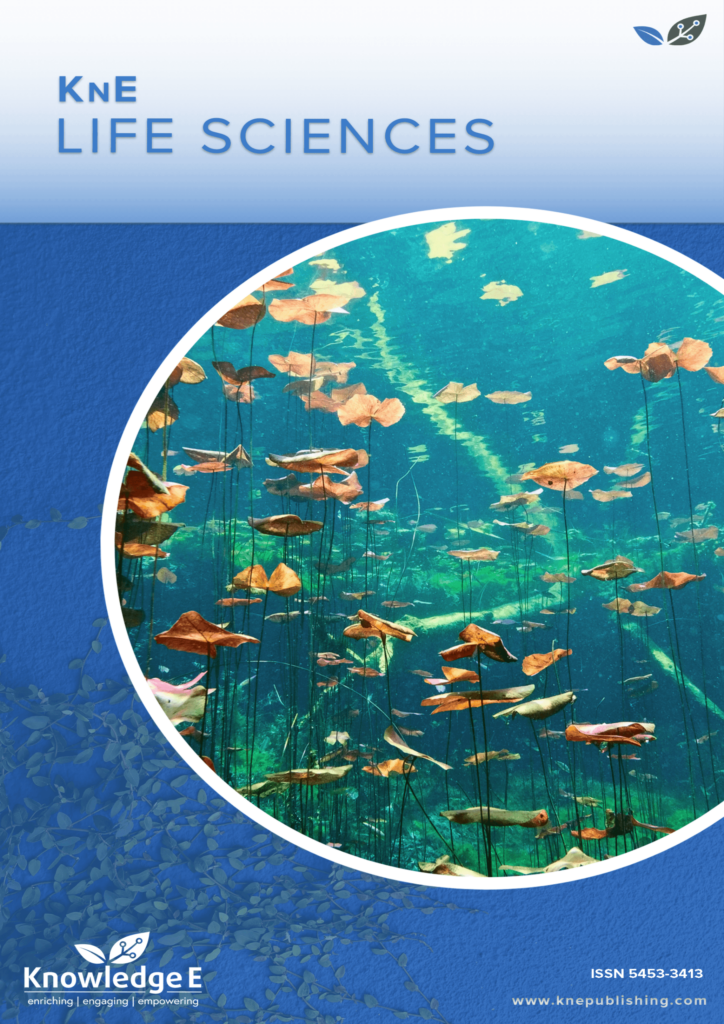
KnE Life Sciences
ISSN: 2413-0877
The latest conference proceedings on life sciences, medicine and pharmacology.
Coptotermes sp. Termite Attacks in Some Locations of Red Meranti (Shorea leprosula Miq.) Plantation
Published date:Jul 11 2017
Journal Title: KnE Life Sciences
Issue title: The 4th International Conference on Biological Science (2015)
Pages:141-146
Authors:
Abstract:
Red Meranti (Shorea leprosula Miq.) have been widely planted in secondary forests and logged over forest. Problems were found in the field is due to the presence of Coptotermes sp. termite attack in S. leprosula plants resulting to its death. The aims of this study were to determine the percentage and intensity of Coptotermes sp. termite attack. The method used is to perform observations of termite attack in several locations planting, i.e. in KHDTK Samboja (East Kalimantan), KHDTK Sebulu (East Kalimantan), PT INHUTANI II, Pulau Laut (South Kalimantan) and PT Suka Jaya Makmur (West Kalimantan). The results showed that the percentage and intensity of Coptotermes sp. termite attacks in KHDTK Samboja, respectively 7.3 % and 4.7 %, in KHDTK Sebulu 11.3 % and 8.2 %, in Inhutani II 5.8 % and 5.3 % and in PT Suka Jaya Makmur 5.4 % and 4.8 %. The source of termite attacks in plants in KHDTK Samboja and KHDTK Sebulu was the termite nest contained in secondary forest bordering S. leprosula plantations while the source of the termite attack in plants in Inhutani II and PT Suka Jaya Makmur was the termite nests located between S. leprosula plantations. Finally, Coptotermes sp termite attack disturbed S. leprosula plantation.
Keywords: Coptotermes sp. termite attack; intensity termite attack; percentage termite attack; Shorea leprosula Miq.
References:
[1] T. R. C. Lee, S. L. Cameron, T. A. Evans, S. Y. W. Ho, and N. Lo, “The origins and radiation of Australian Coptotermes termites: From rainforest to desert dwellers,” Molecular Phylogenetics and Evolution, vol. 82, pp. 234–244, 2015.
[2] M. Verma, S. Sharma, and R. Prasad, “Biological alternatives for termite control: A review,” International Biodeterioration and Biodegradation, vol. 63, no. 8, pp. 959– 972, 2009.
[3] P. Subiakto Parthama, Pemilihan jenis dan biaya penanaman dipterokarpa. [Selection of the type and cost of planting dipterocarp]. Informasi Teknis Dipterokarpa: Balai Besar Penelitian Dipterokarpa, pp. 1–6, 2007, in Bahasa Indonesia.
[4] D. Mardji, Petunjuk praktikum penyakit hutan. [Guidance practical of forest diseases]. Fakultas Kehutanan Universitas Mulawarman, Petunjuk praktikum penyakit hutan. [Guidance practical of forest diseases]. Fakultas Kehutanan Universitas Mulawarman, Samarinda, 2013, in Bahasa Indonesia.
[5] D. Mardji, “Identifikasi dan penanggulangan penyakit pada tanaman kehutanan. [Identification and control of plant diseases forestry]. Pelatihan Bidang Perlindungan Hutan di PT ITCI Kartika Utama,” Identifikasi dan penanggulangan penyakit pada tanaman kehutanan. [Identification and control of plant diseases forestry]. Pelatihan Bidang Perlindungan Hutan di PT ITCI Kartika Utama, pp. 62–87, 2003, in Bahasa
Indonesia.
[6] B. B. Mujinya, M. Adam, F. Mees et al., “Spatial patterns and morphology of termite (Macrotermes falciger) mounds in the Upper Katanga, D.R. Congo,” Catena, vol. 114, pp. 97–106, 2014.
[7] D. Natawiria, “Teknik pengenalan hama hutan tanaman industri. [Introduction of industrial forest pests]. Informasi Teknik No. 4,” Pusat Penelitian dan Pengembangan Hutan Bogor, 1989.
[8] P. Jouquet, N. Guilleux, S. Chintakunta, M. Mendez, S. Subramanian, and R. R. Shanbhag, “The influence of termites on soil sheeting properties varies depending on the materials on which they feed,” European Journal of Soil Biology, vol. 69, pp. 74–78, 2015.
[9] B. F. Peterson, H. L. Stewart, and M. E. Scharf, “Quantification of symbiotic contributions to lower termite lignocellulose digestion using antimicrobial treatments,” Insect Biochemistry and Molecular Biology, vol. 59, pp. 80–88, 2015.
[10] L. MenichettI, L. Landi, P. Nannipieri, T. Katterer, H. Kirchmann, and G. Renella, “Chemical Properties and Biochemical Activity of Colonized and Abandoned LitterFeeding Termite (Macrotermes spp.) Mounds in Chromic Cambisol Area on the Borana Plateau, Ethiopia,” Pedosphere, vol. 24, no. 3, pp. 399–407, 2014.
[11] S.-H. Lee, N.-Y. Su, and P. Bardunias, “Exploring landscape structure effect on termite territory size using a model approach,” BioSystems, vol. 90, no. 3, pp. 890– 896, 2007.
[12] P. A. Werner, L. D. Prior, and J. Forner, “Growth and survival of termite-piped Eucalyptus tetrodonta and E. miniata in northern Australia: Implications for harvest of trees for didgeridoos,” Forest Ecology and Management, vol. 256, no. 3, pp. 328– 334, 2008.
[13] H. I. J. Black and M. J. N. Okwakol, “Agricultural intensification, soil biodiversity and agroecosystem function in the tropics: The role of termites,” Applied Soil Ecology, vol. 6, no. 1, pp. 37–53, 1997.
[14] T. R. Hartke and B. Baer, “The mating biology of termites: A comparative review,” Animal Behaviour, vol. 82, no. 5, pp. 927–936, 2011.
[15] C. Elouard, Pests and diseases of Dipterocarpaceae. A review of dipterocarps: taxonomy, ecology, and silviculture, CIFOR, and silviculture, 1998.
[16] F. E. Apolinário and C. Martius, “Ecological role of termites (Insecta, Isoptera) in tree trunks in central Amazonian rain forests,” Forest Ecology and Management, vol. 194,no. 1-3, pp. 23–28, 2004.